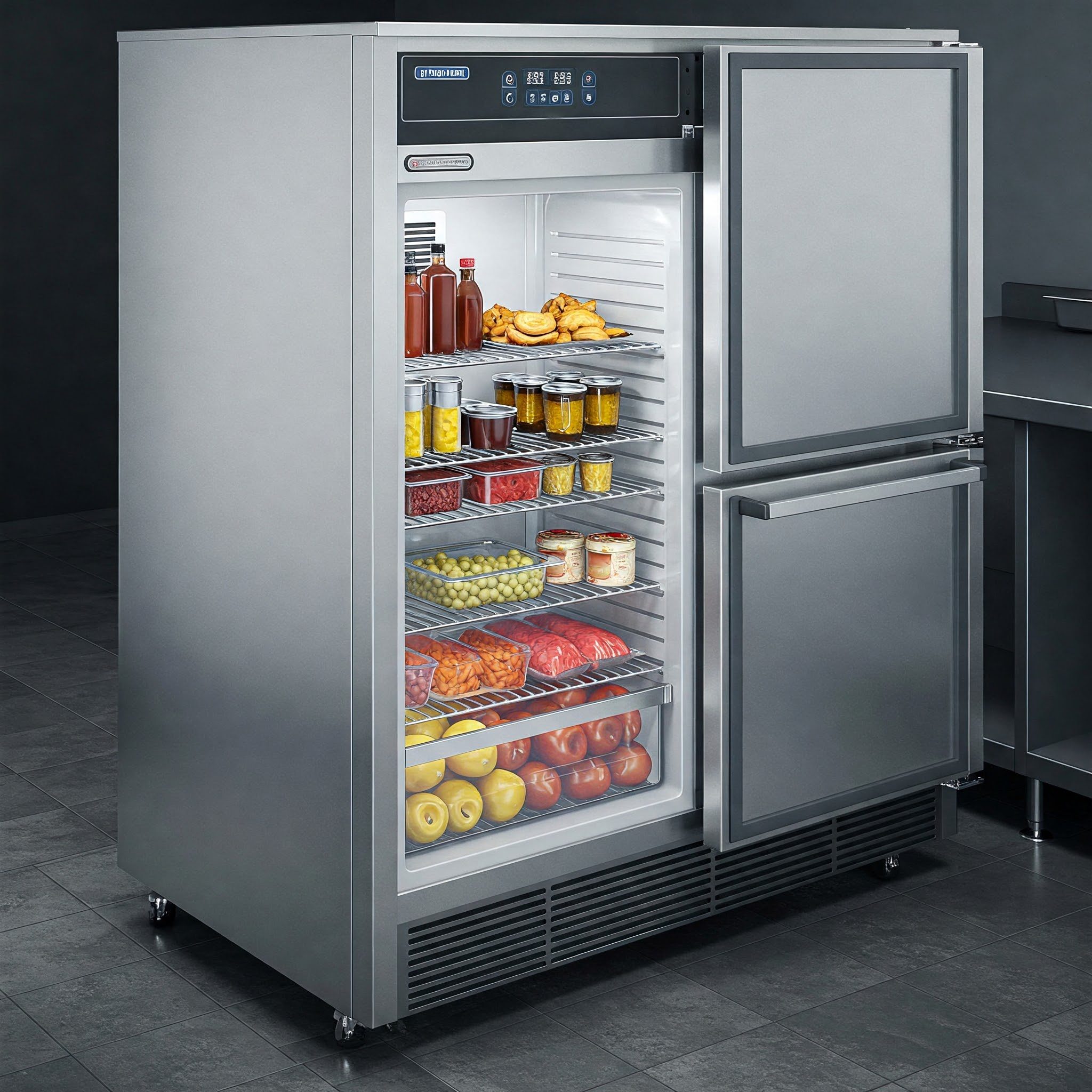Drop-In Refrigeration: Seamless Integration for Efficient Cooling
Drop-in refrigeration units are a specialized type of cooling equipment designed to integrate seamlessly into countertops, bars, or custom furniture. These units are often found in commercial kitchens, bars, buffets, and retail environments, where efficient cooling and space-saving designs are essential. Drop-in refrigeration combines functionality with aesthetics, making it ideal for establishments that value both practicality and design.
What Is Drop-In Refrigeration?
Drop-in refrigeration refers to compact, self-contained refrigeration units that are installed directly into a countertop or workspace. The units sit flush with the surrounding surface, providing easy access to chilled items while maintaining a sleek and organized appearance. These units are commonly used for storing beverages, ingredients, or food items that need to remain fresh and accessible.
Types of Drop-In Refrigeration
1. Drop-In Refrigerated Wells
- Description: Open-top wells that keep food items chilled for buffet lines or prep stations.
- Best For: Buffets, salad bars, and catering services.
- Example Items: Salads, cold appetizers, desserts, and beverages.
- Advantages:
- Ideal for food display and self-service.
- Available in various sizes to fit different capacities.
2. Drop-In Refrigerated Drawers
- Description: Refrigerated drawers that are installed beneath countertops for discrete storage.
- Best For: Commercial kitchens and bars.
- Example Items: Prepped ingredients, garnishes, and chilled beverages.
- Advantages:
- Saves countertop space.
- Keeps items easily accessible for staff.
3. Drop-In Beverage Coolers
- Description: Compact units with open tops designed to chill bottles or cans.
- Best For: Bars, cafes, and convenience stores.
- Example Items: Beer, wine, soft drinks, and juices.
- Advantages:
- Quick access for serving staff or customers.
- Compact design fits into small spaces.
4. Drop-In Freezer Units
- Description: Drop-in units that maintain freezing temperatures for specific items.
- Best For: Ice cream parlors, cafes, and restaurants.
- Example Items: Ice cream, frozen desserts, and specialty frozen items.
- Advantages:
- Keeps frozen goods at optimal temperatures.
- Sleek and space-efficient.
5. Combination Drop-In Units
- Description: Units that combine refrigeration and heating, offering flexibility in food storage and display.
- Best For: Buffets and catering services.
- Example Items: Chilled salads alongside warm dishes.
- Advantages:
- Dual functionality in one unit.
- Ideal for mixed food displays.
Key Features of Drop-In Refrigeration
- Seamless Design
- Flush installation ensures a clean and professional appearance.
- Temperature Control
- Adjustable thermostats allow precise cooling, typically ranging from 0°C to 10°C (32°F to 50°F) for refrigeration and below -18°C (-0.4°F) for freezer units.
- Durable Construction
- Stainless steel exteriors and interiors ensure durability and ease of cleaning.
- Efficient Cooling System
- Designed for consistent cooling and even temperature distribution.
- Insulated Wells or Drawers
- High-quality insulation minimizes temperature loss and reduces energy consumption.
- Drainage System
- Built-in drainage facilitates cleaning and prevents water buildup.
- Customizable Sizes
- Available in various dimensions to fit specific spaces or needs.
- Energy Efficiency
- Modern units feature energy-saving compressors and LED lighting.
Applications of Drop-In Refrigeration
- Restaurants and Commercial Kitchens: For keeping ingredients or garnishes fresh and within reach.
- Bars and Cafes: For chilling beverages or mixers at the counter.
- Buffets and Catering Services: For displaying chilled food items like salads, desserts, or cold platters.
- Retail and Convenience Stores: For storing grab-and-go drinks or snacks in a compact space.
Benefits of Drop-In Refrigeration
- Space-Saving Design
- Maximizes counter space while providing cooling functionality.
- Enhanced Accessibility
- Keeps items within easy reach for staff or customers.
- Aesthetic Appeal
- Clean, flush installation creates a sleek and organized look.
- Versatility
- Suitable for various applications, from food prep to beverage service.
- Temperature Control
- Maintains consistent temperatures to preserve freshness.
- Easy to Maintain
- Stainless steel construction and built-in drainage simplify cleaning.
Maintenance Tips for Drop-In Refrigeration
Daily Maintenance
- Clean the Interior: Wipe down surfaces with a mild detergent to remove spills or debris.
- Check Temperature Settings: Ensure the thermostat is set to the desired level.
Weekly Maintenance
- Inspect the Drainage System: Clear any clogs to prevent water buildup.
- Wipe the Exterior: Keep stainless steel surfaces clean and polished.
Monthly Maintenance
- Clean Condenser Coils: Use a brush or vacuum to remove dust and improve efficiency.
- Inspect Door Seals (if applicable): Check gaskets for wear and tear to prevent air leaks.
Seasonal Maintenance
- Defrost (if Manual): Remove any ice buildup in freezer units.
- Schedule Professional Servicing: Have a technician inspect and maintain the cooling system.
Troubleshooting Common Issues
- Unit Not Cooling Properly
- Cause: Blocked vents, dirty condenser coils, or incorrect temperature settings.
- Solution: Clean the vents and coils, and check thermostat settings.
- Water Accumulation
- Cause: Clogged drainage system or high humidity.
- Solution: Clear the drainage and reduce ambient humidity levels.
- Noise During Operation
- Cause: Loose components or issues with the compressor.
- Solution: Tighten screws or consult a technician.
- Uneven Cooling
- Cause: Overloading or poor airflow.
- Solution: Reduce load and ensure proper air circulation.
Choosing the Right Drop-In Refrigeration Unit
- Size and Capacity: Choose a unit that fits your space and storage needs.
- Design and Aesthetics: Select a unit that complements your counter or workspace.
- Energy Efficiency: Opt for energy-saving models to reduce operational costs.
- Cooling Requirements: Ensure the unit can maintain the ideal temperature for your products.
- Ease of Installation: Look for units that are easy to install and integrate into existing spaces.


